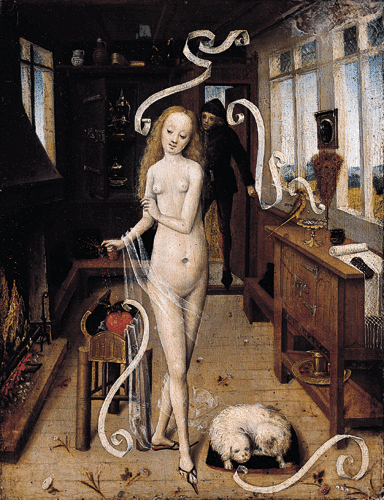One of the highlights in bad taste are two albums by Johannes Lutma (1584 – 1669), engraved by his son Jacob Lutma.
They are albums of ornamental prints, cartouches in the auricular style, titled Festivitates aurifabris statuariis[1] and Veelderhande Nieuwe Compartemente[2].
Why did I say that these plates are in bad taste?
So says my guide Les Maîtres ornemanistes on page 508:
Ces Cartouches, composés dans le genre auriculaire exagéré, sont affreux de formes; c’est la vraie décadence de l’art.[3]
These cartouches, executed in an exaggerated auricular style, are hideously shaped; it is the veritable decadence of art. (tr. mine)
Surely, one of the reasons these plates are considered in poor taste, must be their vulvaesque nature, you have to be pretty green behind the ears not to grasp the yonic symbolism.
In equally bad taste is the Cornelis Floris (1514–1575) album Veelderleij Veranderinghe van Grotissen ende Compertimenten.
One word that keeps cropping up in the vocabulary of these Dutch ornamentists is compartment, one source translates it as panel, although it seems more likely that it has something to do with ‘compartment (heraldry)‘.
As mentioned before, the auricular style is a shape derived from the human ear. In Dutch, the style is called kwab and kwab is the word a weak, blubbery mass of human or animal tissue, such as quivering flesh, or a brain lobe.
Most art historians call this work of Lutma zoomorphic. I’d like to make a case to include in the zoological horror canon.
Illustrations:
- Cartouche met groot compartiment (Festivitates Aurifabris) [4]
- Cartouche met bovenaan en onderaan een masker (Veelderhande Nieuwe Compartemente)[5]
To avoid all misunderstandings, I can see why others think these plates are in bad taste, but I love them. Publishing negative criticism of stuff I like is one my favourite discourse strategies, see also: Whenever I like something which is considered to be in poor taste.

